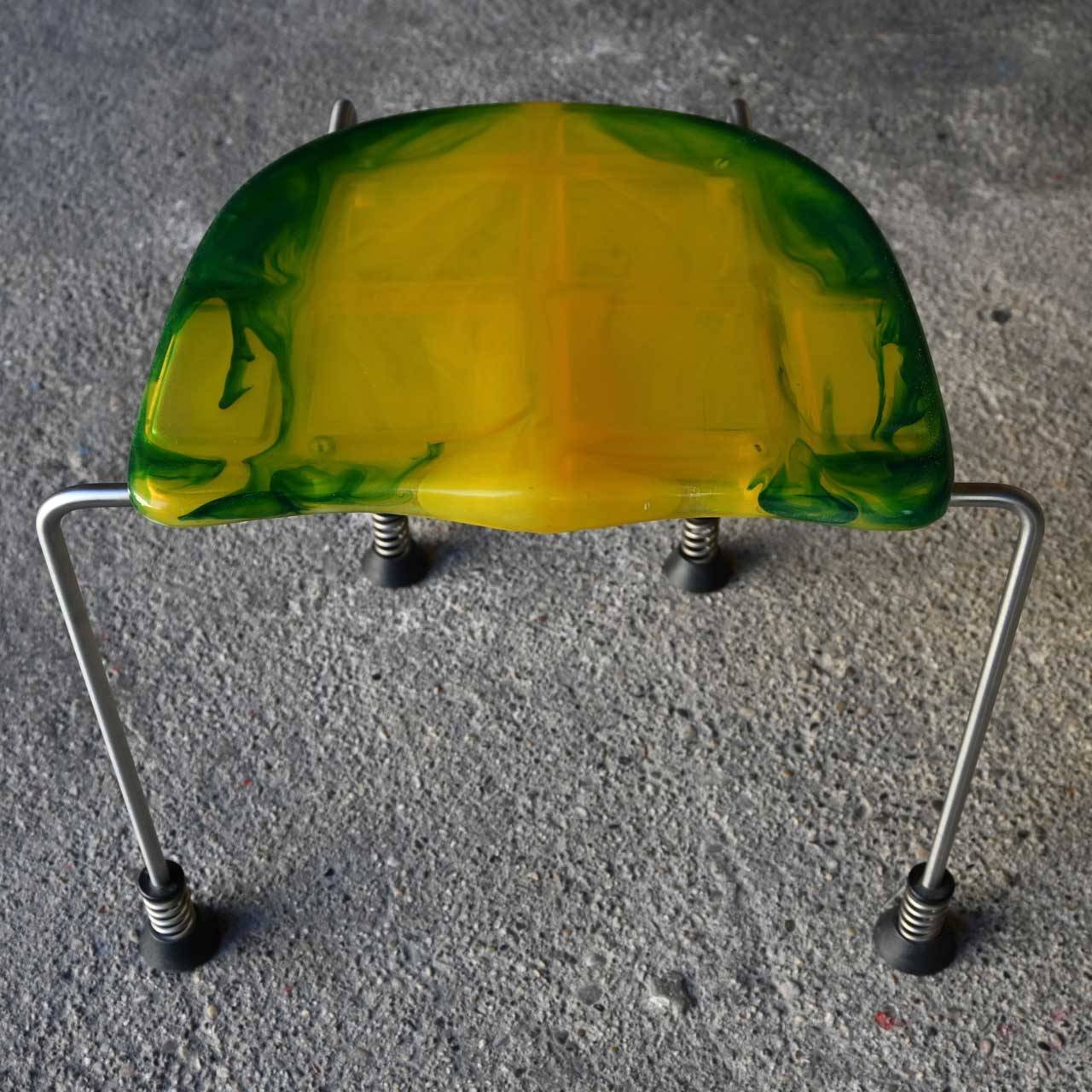Gaetano Pesce
Gaetano Pesce is a famous Italian designer and architect known for his eclectic and innovative career in the fields of industrial design and architecture.
Career and Background: Gaetano Pesce was born on November 8, 1939, in La Spezia, Italy. He studied architecture at the Sapienza – University of Rome, where he graduated in 1965. He began his career working as an architect and designer, collaborating with various designers and companies.
Iconic Works: Gaetano Pesce is known for his bold and innovative creations in the field of design in the 1960s and 1970s. He designed a series of furniture, furnishings, and lighting that challenged traditional design conventions. Among his most famous works are the “Up Series” seating (1969), characterized by organic shapes and soft padding, and the “Moloch” sofa (1971), which incorporates found objects into its structure.
Experimental Materials: Gaetano Pesce is renowned for his experimentation with unconventional materials in design. He has used polyurethane resins, silicone rubber, and other innovative materials to create unique and colorful furniture pieces. This approach has contributed to redefining the traditional concept of furniture and furnishings.
Architecture and Public Works: In addition to design, Gaetano Pesce has also worked in the field of architecture, designing residential buildings and public spaces. He has created architectural works such as the “Palazzo Italia” for Expo 2015 in Milan.
Social Engagement: Gaetano Pesce has been involved in projects that promote art and design as tools for social change. He has advocated the idea that design should reflect human diversity and individuality, going beyond traditional aesthetic norms.
Recognition: Gaetano Pesce’s work has been exhibited in world-renowned museums and has received numerous awards in the fields of design and contemporary art.
Gaetano Pesce is considered one of the most influential and innovative designers of the 20th century. His ability to challenge conventional design norms and use experimental materials has made him an iconic figure in the world of contemporary design and architecture.
Gaetano Pesce
Gaetano Pesce is a famous Italian designer and architect known for his eclectic and innovative career in the fields of industrial design and architecture.
Career and Background: Gaetano Pesce was born on November 8, 1939, in La Spezia, Italy. He studied architecture at the Sapienza – University of Rome, where he graduated in 1965. He began his career working as an architect and designer, collaborating with various designers and companies.
Iconic Works: Gaetano Pesce is known for his bold and innovative creations in the field of design in the 1960s and 1970s. He designed a series of furniture, furnishings, and lighting that challenged traditional design conventions. Among his most famous works are the “Up Series” seating (1969), characterized by organic shapes and soft padding, and the “Moloch” sofa (1971), which incorporates found objects into its structure.
Experimental Materials: Gaetano Pesce is renowned for his experimentation with unconventional materials in design. He has used polyurethane resins, silicone rubber, and other innovative materials to create unique and colorful furniture pieces. This approach has contributed to redefining the traditional concept of furniture and furnishings.
Architecture and Public Works: In addition to design, Gaetano Pesce has also worked in the field of architecture, designing residential buildings and public spaces. He has created architectural works such as the “Palazzo Italia” for Expo 2015 in Milan.
Social Engagement: Gaetano Pesce has been involved in projects that promote art and design as tools for social change. He has advocated the idea that design should reflect human diversity and individuality, going beyond traditional aesthetic norms.
Recognition: Gaetano Pesce’s work has been exhibited in world-renowned museums and has received numerous awards in the fields of design and contemporary art.
Gaetano Pesce is considered one of the most influential and innovative designers of the 20th century. His ability to challenge conventional design norms and use experimental materials has made him an iconic figure in the world of contemporary design and architecture.




